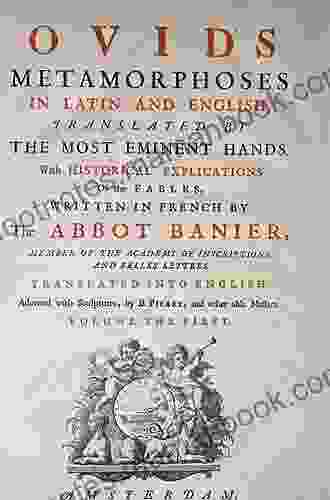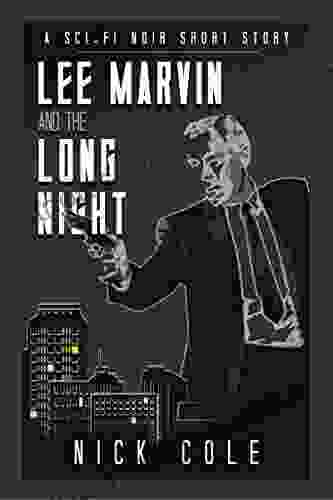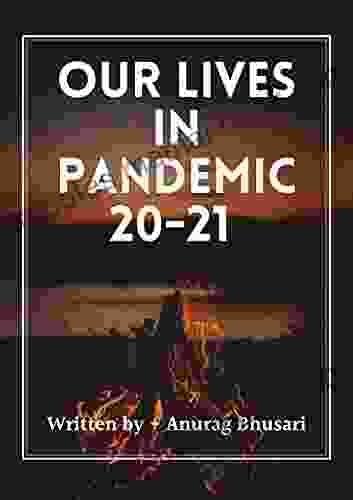The Next Hundred Lears: Limericks After Lear

In 2016, poet Jane Hirshfield published a collection of 100 limericks, titled The Hundred Limericks. The book was a critical and commercial success, and it has been praised for its wit, humor, and insight. One of the most popular limericks in the collection is "Lear's Daughters," which reimagines Shakespeare's play King Lear in limerick form:
- There once was a king named old Lear,
- Whose daughters he asked, "Who loves me most, dear?"
- Goneril and Regan,
- They lied like a pagan,
- While Cordelia said, "Actions speak clear!"
Hirshfield's limerick is just one example of the many ways that poets have used the limerick form to retell and reimagine Shakespeare's plays. In this essay, I will explore the history of the limerick after Lear, and I will discuss some of the most successful and innovative examples of the form. Along with discussing works by Edward Lear, Ogden Nash and Dorothy Parker will also be mentioned.
4.5 out of 5
| Language | : | English |
| File size | : | 6353 KB |
| Text-to-Speech | : | Enabled |
| Screen Reader | : | Supported |
| Enhanced typesetting | : | Enabled |
| Print length | : | 122 pages |
| Lending | : | Enabled |
The History of the Limerick After Lear
The limerick is a five-line poem with a distinctive rhyme scheme and meter. The first, second, and fifth lines rhyme, and the third and fourth lines rhyme. The lines are also all the same length, with five anapests (two unstressed syllables followed by a stressed syllable). The limerick was first popularized in the 19th century by Edward Lear, who published a collection of limericks in 1846. Lear's limericks were often nonsensical and humorous, and they quickly became a popular form of light verse.
After Lear, many other poets began to write limericks, including Ogden Nash and Dorothy Parker. Nash's limericks were often witty and satirical, while Parker's limericks were often dark and humorous. In the 20th century, the limerick continued to be a popular form of verse, and it was used by poets such as W.H. Auden, Elizabeth Bishop, and John Ashbery.
Limericks After Lear
In recent years, there has been a resurgence of interest in the limerick. A number of contemporary poets have used the form to retell and reimagine Shakespeare's plays. These poets include Billy Collins, Paul Muldoon, and Jane Hirshfield.
Collins' limerick "Hamlet" retells the story of Shakespeare's play in just five lines:
- Young Hamlet, a prince of great sorrow,
- Had a father who died, just like tomorrow.
- His mother remarried,
- He got mad and he tarried,
- And killed everyone, including his marrow.
Muldoon's limerick "Macbeth" reimagines Shakespeare's play as a horror story:
- Macbeth, a thane with ambition,
- Murdered Duncan, his king, with derision.
- But the witches' decree,
- Brought him misery,
- And he died in a fit of contrition.
Hirshfield's limerick "Lear's Daughters" retells the story of Shakespeare's play in a more sympathetic light:
- There once was a king named old Lear,
- Whose daughters he asked, "Who loves me most, dear?"
- Goneril and Regan,
- They lied like a pagan,
- While Cordelia said, "Actions speak clear!"
These are just a few examples of the many ways that poets have used the limerick form to retell and reimagine Shakespeare's plays. The limerick is a versatile and adaptable form, and it can be used to tell stories, make jokes, and explore complex themes. In the hands of a skilled poet, the limerick can be a powerful and moving form of verse.
The limerick is a beloved form of verse that has been used by poets for centuries. In recent years, there has been a resurgence of interest in the limerick, and a number of contemporary poets have used the form to retell and reimagine Shakespeare's plays. These poets have shown that the limerick is a versatile and adaptable form that can be used to tell stories, make jokes, and explore complex themes. In the hands of a skilled poet, the limerick can be a powerful and moving form of verse.
4.5 out of 5
| Language | : | English |
| File size | : | 6353 KB |
| Text-to-Speech | : | Enabled |
| Screen Reader | : | Supported |
| Enhanced typesetting | : | Enabled |
| Print length | : | 122 pages |
| Lending | : | Enabled |
Do you want to contribute by writing guest posts on this blog?
Please contact us and send us a resume of previous articles that you have written.
 Top Book
Top Book Novel
Novel Fiction
Fiction Nonfiction
Nonfiction Literature
Literature Paperback
Paperback Hardcover
Hardcover E-book
E-book Audiobook
Audiobook Bestseller
Bestseller Classic
Classic Mystery
Mystery Thriller
Thriller Romance
Romance Fantasy
Fantasy Science Fiction
Science Fiction Biography
Biography Memoir
Memoir Autobiography
Autobiography Poetry
Poetry Drama
Drama Historical Fiction
Historical Fiction Self-help
Self-help Young Adult
Young Adult Childrens Books
Childrens Books Graphic Novel
Graphic Novel Anthology
Anthology Series
Series Encyclopedia
Encyclopedia Reference
Reference Guidebook
Guidebook Textbook
Textbook Workbook
Workbook Journal
Journal Diary
Diary Manuscript
Manuscript Folio
Folio Pulp Fiction
Pulp Fiction Short Stories
Short Stories Fairy Tales
Fairy Tales Fables
Fables Mythology
Mythology Philosophy
Philosophy Religion
Religion Spirituality
Spirituality Essays
Essays Critique
Critique Commentary
Commentary Glossary
Glossary Bibliography
Bibliography Index
Index Table of Contents
Table of Contents Preface
Preface Introduction
Introduction Foreword
Foreword Afterword
Afterword Appendices
Appendices Annotations
Annotations Footnotes
Footnotes Epilogue
Epilogue Prologue
Prologue Billie Coleman
Billie Coleman Carolyn Keith Hopper
Carolyn Keith Hopper Tirso De Molina
Tirso De Molina Paul Zunckel
Paul Zunckel Brianna Wiest
Brianna Wiest Kathleen G Nadeau
Kathleen G Nadeau Ashley Rogers Berner
Ashley Rogers Berner Kathryn Cope
Kathryn Cope Brian Pomphrey
Brian Pomphrey Tom Henry
Tom Henry Patricia Gardner
Patricia Gardner R J Michaels
R J Michaels J B Cantwell
J B Cantwell Becket
Becket Natalie Hall
Natalie Hall Miguel Angel Gardetti
Miguel Angel Gardetti Melody Grace
Melody Grace Marata Eros
Marata Eros Lisa Damour Ph D
Lisa Damour Ph D Matt Goldwasser
Matt Goldwasser
Light bulbAdvertise smarter! Our strategic ad space ensures maximum exposure. Reserve your spot today!

 Reginald CoxUnbelievable Miscarriages of Justice: Six True Murder Cases That Shook the...
Reginald CoxUnbelievable Miscarriages of Justice: Six True Murder Cases That Shook the... Gerald BellFollow ·5.8k
Gerald BellFollow ·5.8k Jules VerneFollow ·11.1k
Jules VerneFollow ·11.1k Drew BellFollow ·5.7k
Drew BellFollow ·5.7k Frank MitchellFollow ·10.9k
Frank MitchellFollow ·10.9k Kevin TurnerFollow ·10.3k
Kevin TurnerFollow ·10.3k Andy HayesFollow ·16.9k
Andy HayesFollow ·16.9k Deion SimmonsFollow ·10.3k
Deion SimmonsFollow ·10.3k Douglas AdamsFollow ·7.3k
Douglas AdamsFollow ·7.3k

 Colin Foster
Colin FosterBlacktop Wasteland: A Novel S A Cosby
In the vast literary landscape of...

 Curtis Stewart
Curtis StewartOvid's Metamorphoses: An Ancient Epic of Transformation...
Ovid's Metamorphoses is an epic poem...

 Adam Hayes
Adam HayesThe Elements of Piano Playing Op. 30: A Comprehensive...
: Unveiling...

 Patrick Hayes
Patrick HayesLee Marvin and The Long Night: A Tale of Vengeance, Grit,...
In the annals of Western cinema, few...

 Jermaine Powell
Jermaine PowellUnveiling the Alluring World of Romantic Thrillers,...
Prepare to delve into a...
4.5 out of 5
| Language | : | English |
| File size | : | 6353 KB |
| Text-to-Speech | : | Enabled |
| Screen Reader | : | Supported |
| Enhanced typesetting | : | Enabled |
| Print length | : | 122 pages |
| Lending | : | Enabled |












